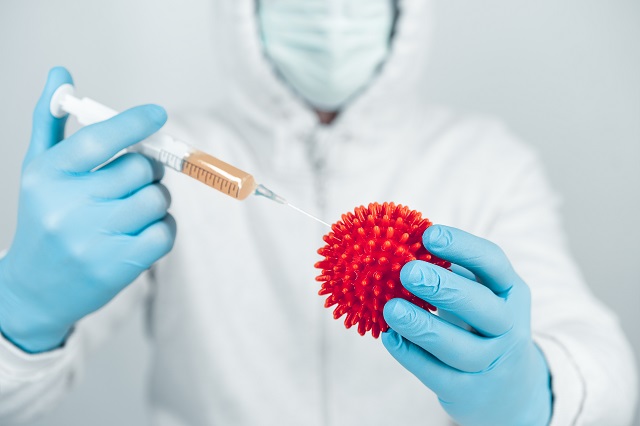
Credit: Adriana Duduleanu / EyeEm / Getty Images
The headlines have been full of the latest “breakthroughs” in efforts to develop a vaccine against COVID-19, and markets have even reacted to all the twists and turns in recent weeks. Although he understands the desire for any positive news in the midst of a deadly pandemic, Michael Kinch, associate vice chancellor and director of the Center for Research Innovation in Biotechnology at Washington University in St. Louis, is keen to temper expectations about a vaccine. He notes that the history of vaccines is filled with arduous trial-and-error, and explains why “layering our defenses” against the new coronavirus may be our best shot.
Three Takeaways
- Kinch, the author of “Between Hope and Fear: A History of Vaccines and Human Immunity,” warns against putting all of our attention on the development of a COVID-19 vaccine. He says vaccines, on average, can take a decade and a half to be successfully developed. The story of what happened when thousands of children who were given a tainted polio vaccine in 1955 is a cautionary tale about the dangers of rushing vaccinations into production.
- Research into the use of convalescent plasma has been showing promising results, according to Kinch. The technique, which dates back to the late 19th century, involves using donated plasma from patients who have recovered from COVID-19 and have antibodies, to treat those who are struggling with the virus. Plasma, he believes, may be our single best weapon against COVID in the coming months.
- The number of children being vaccinated for infectious diseases has plunged over the past few months because many pediatricians' offices have been closed during the pandemic (or parents were afraid to venture out). Kinch is concerned about a potential resurgence of deadly but preventable diseases, including the measles, and urges parents to contact their children’s doctors about getting up to date with any missing vaccinations. He says local pharmacies can sometimes help as well.
More Reading
- When H.I.V. was first identified, it was thought that a vaccine would be created to combat the virus. Find out why there is still no H.I.V. vaccine, almost four decades later, and the lessons for the fight against COVID-19 about managing a chronic illness.
- Learn more about the use of convalescent plasma for patients with COVID-19.
- Here’s why the novel coronavirus might stick around for a long time, even after a vaccine is deployed.
- Many of us have forgotten about the terrifying effects of a virus that once paralyzed and killed children all over the world. Paul Alexander contracted polio in Texas in 1952 when he was six years old. Read his incredible survival story here.

